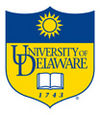PHYS 824: Introduction to Nanophysics
|
|
|
Course Topics
|
| The course provides a hands-on experience for graduate students in sciences (physics, chemistry) and engineering (electrical, chemical, materials), as well as advanced undergraduates, to analyze electronic structure and transport properties of basic classes of carbon, semiconductor, and magnetic nanostructures explored at the current research frontiers.
|
- Nanostructures in equilibrium: graphene and other two-dimensional materials, carbon nanotubes, topological insulators, magnetic multilayers.
- Nanostructure out of equilibrium: conductance quantization, quantum interference, spin-dependent tunneling, spin and quantum Hall effects, spin-transfer torque, I-V curves.
- Theoretical techniques: elements of density functional theory (DFT), Landauer-Büttiker scattering formalism, nonequilibrium Green function techniques.
- Experimental techniques: scanning tunneling and atomic force microscopy.
- Applications: nanoelectronics, spintronics, thermoelectrics.
|
|
News
|
- Final Project is posted and due on Friday 12/16 as poster presentation in Sharp Lab 225 at 2:00PM.
|
Lecture in Progress
|
- Application of Landauer-Büttiker formula to quantum interference effects in electronic transport
|
Quick Links
|
|
|
|
ACKNOWLEDGMENT: Portion of the course material is based upon work supported by the National Science Foundation under Grants No. ECCS 0725566 and ECCS 1202069. Any opinions, findings, and conclusions or recommendations expressed in this material are those of the author and do not necessarily reflect the views of the National Science Foundation.
Wiki Getting Started
Consult User's Guide for information on using the wiki software.

